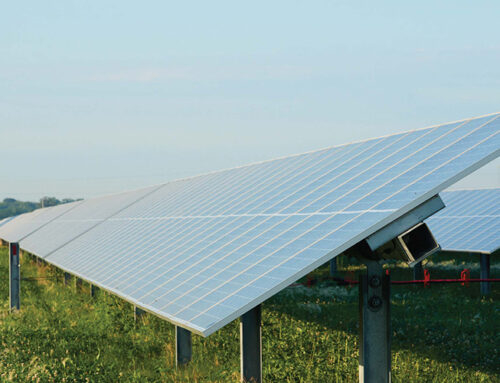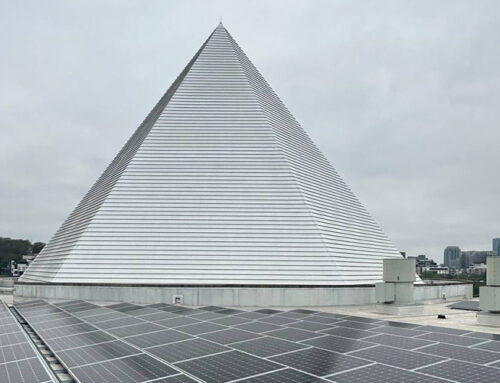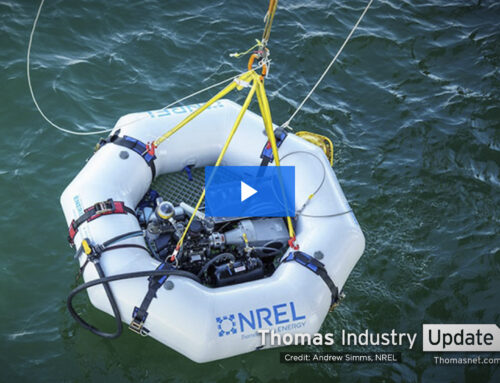In move to clean energy, Wisconsin invests most in solar power. How do we rank nationally?
October 17, 2024
As the U.S. transitions away from fossil fuels at a faster pace than many people realize, Wisconsin has invested most in solar power compared to other clean energy technologies, a new report by a leading climate change science organization has found.
Climate Central, a nonprofit group led by a team of scientists, analyzed each state’s public and private spending on clean energy since 2018 using data from the Clean Investment Monitor, a joint project of Rhodium Group and the Massachusetts Institute of Technology’s Center for Energy and Environmental Policy Research. In total, the nation spent nearly $248 billion in 2023, triple what it spent in 2018.
That includes $6 billion spent in Wisconsin, the majority of it invested in solar energy. The state is an outlier among its neighbors in the upper Midwest, most of whom invested more heavily in electric vehicles. And it’s in the middle of the pack nationally for how much it spent overall on clean energy technologies.
The degree to which our planet has warmed in recent decades has been driven largely by human activities, particularly burning fossil fuels for heat and energy. Climate and weather experts worldwide say countries must dramatically reduce their reliance on fossil fuels to limit the harmful effects of climate change, which are already being seen at home and across the globe.
In Wisconsin, clean energy advocates would like to see more requirements to use clean energy to help speed the transition, said Chelsea Chandler, Clean Wisconsin’s Climate, Energy and Air program director.
“The pace of how fast we get there matters,” Chandler said.
Clean energy tech includes solar, wind, electric vehicles
The Clean Investment Monitor tracks investments into clean energy across three categories: manufacturing, like the creation of solar panels; energy and industry, or the actual deployment of the technology; and retail, like people purchasing electric vehicles.

Across the U.S., the five top technologies were:
- Electric vehicles, which use electric motors instead of burning fossil fuels like gas or diesel to run.
- Solar power, which converts energy from the sun into electricity.
- Wind power, which converts energy from wind into electricity.
- Heat pumps, which use electricity to extract heat and move hot air from one place to another, providing an alternative to air conditioners and furnaces.
- Carbon management, or capturing carbon dioxide from places like power plants and refineries and storing it underground.
Wisconsin has spent $3.8 billion on solar, less on EVs
Of the $6 billion Wisconsin has put into clean energy technologies since 2018, $3.8 billion of that was toward solar energy, according to the analysis.
Most of that comes in the form of large-scale solar projects, said Charlotte McClintock, a senior analyst at Rhodium Group who is leading the development of the Clean Investment Monitor. Those projects include solar arrays in Grant, Wood and Waushara counties put up by Alliant Energy’s Wisconsin subsidiary, Wisconsin Power and Light Company.
About $500 million comes from households and businesses putting up solar panels, she said.
The solar boom makes sense, Chandler said, because Wisconsin gets a reliable amount of sunshine and solar power is getting cheaper.

Wisconsin is alone in the upper Midwest in investing most in solar. That’s doesn’t mean other states aren’t progressing on solar energy — it’s a reflection that “we’re behind on EVs,” Chandler said.
Minnesota, Illinois, Michigan, Indiana and Ohio all have invested most in zero-emission vehicles, according to the analysis. But Wisconsin is starting to pick up its pace, Chandler said, by passing a law earlier this year that opened the door for funding to build out its EV charging network.
More:Tony Evers signs bills clearing way for electric vehicle charging network
Required clean energy targets could help Wisconsin speed up transition
Wisconsin ranks 33rd among states for how much it has spent on clean energy technologies in the last few years, McClintock said. California and Texas spent the most, investing $191 billion and $144 billion, respectively, between 2018 and the first half of 2024.
That Wisconsin is somewhere in the middle isn’t surprising to Chandler.
Other states have more ambitious requirements to speed their clean energy transition, she said, while Wisconsin is focused on providing incentives to hit voluntary targets, like its goal of having 100% carbon-free electricity by 2050.
“If we are really serious about moving quickly in that direction, I think we do need some more requirements,” Chandler said.
Madeline Heim is a Report for America corps reporter who writes about environmental issues in the Mississippi River watershed and across Wisconsin. Contact her at 920-996-7266 or mheim@gannett.com.
Search
RECENT PRESS RELEASES
Related Post



